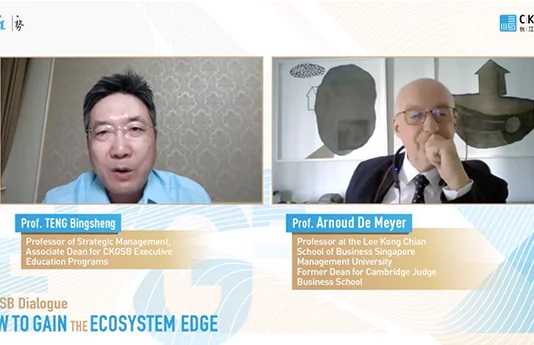Succession planning is something boards need to think about constantly, and not just when the CEO is due to retire.
Once upon a time, boards picked their CEO for the long haul. “Unless he was hit by a bus, had a health problem, or committed a crime, they knew how long he was going to be there,” says Joel Koblentz, Senior Partner at the Koblentz Group, an Atlanta-headquartered executive search and corporate board advisory firm.
Now that’s changed. Geopolitics, “black swan” risk events, corporate data hacking and even the plans for cash that has accumulated can lead a board to send their CEO packing. Rapidly evolving needs mean that the CEO the board chose just last year may no longer be the right person to lead the company this year, Koblentz notes.
Procter & Gamble, for instance, had a very solid succession process in place when A.G. Lafley retired in 2010, Koblentz recalls, but although Lafley had written a book on succession and taught the process at Harvard, he took the plane back to Cincinnati just three years later and rejoined as CEO. Coca-Cola is another firm that has had a hard time finding the right leaders, despite well-laid plans.
“We’ve seen a number of these cases where the succession was well-orchestrated, well-planned, examined, and executed, but the world changed,” says Koblentz.
Between 2000 and 2012, average CEO tenure declined from 10 years to 8.1 years, according to a 2014 Conference Board study. Analysts speculate that more executives may be quitting earlier now because of the growing pressures of global competition, independent directors, and activist shareholders. The rise of private equity firms may also be providing more attractive alternatives for top-flight managers.
Yet despite the fact that so much of a company’s success depends on picking a CEO that employees, customers and perhaps most importantly, investors, can support, most boards still act as if they won’t have to think about finding a new chief for a decade or two.
Boards’ reluctance to accept the reality of a revolving door in the corner office makes the succession process much more expensive and even riskier, succession experts say.
Most textbooks about CEO succession focus on what happens during the last six months of the prior CEO’s tenure, one succession expert says, but in fact, a lot of work should begin years before.
Helen Handfield-Jones, an Ottawa-based consultant, argues that boards’ most common mistake is waiting too long to begin preparing for the next search. Once they have someone in place, “they go to sleep and stop thinking about this for a while,” she says.
Succession experts advise casting a skeptical eye on the CEO from the very beginning of his or her tenure. What works best, according to Koblentz, is if the board makes a list of three or four top priorities every year that they think their CEO must address, and then ask what kinds of competencies and background an executive would need to address those issues. “What value chain do we need to enhance shareholder value? Here’s our strategy, here’s our structure, here’s how we’re organized. What kind of leader can drive that train?” he explains. If the board believes that their current CEO is up to the challenge, they will generally support this leader. If not—and more and more often today—the board will move swiftly to seek new leadership.
Some research suggests that this should be a list that the board keeps to itself. As counterintuitive as it might seem, some consultants say that the current CEO is among those who should be kept out of the loop. Even if the current CEO is successful, it doesn’t follow that his instincts about who to make crown prince are right: one Stanford University study of executive succession in the Fortune 250 found that out of a sample of clearly identified handpicked successors between 2000 and 2011, almost 80% underperformed during their tenure.
Handfield-Jones advises that the board ask early and often whether the current CEO is still right for the job. Quite often the changeover from one CEO to the next happens a year or two late, she says. Boards tend to follow the CEO’s proposed timeline rather than the company’s strategic needs.
They need to be equally tough on themselves, Handfield-Jones says. Strong boards tend to make strong choices. “The CEO succession process can really derail badly if the board is not well-built. It’s where a board earns its keep and does its most important work—and it better be in good shape,” she explains.
If the members are not independent enough, lack the right skill mix, or are held back by a weak chair, the process can go wrong, according to Handfield-Jones. Internal conflicts on the board can also hamper the process.
Although emotions tend to fly high while such a decision is made, the hiring committee needs to stay dispassionate and professional through the process, Koblentz says. Often, he says, personal likes and dislikes play a role that they shouldn’t. Board members sometimes even let superficial characteristics get in the way.
“Those things have little to do with the quality of thought, ability to communicate expectations to the company’s principal stakeholders… and whether this individual will lead to competitive advantage,” explains Koblentz.
Table manners, friendliness, or how well a candidate dresses shouldn’t matter, experts say. The only important question is, is this the candidate who can deliver us the best risk-adjusted growth?
Another perennial challenge is deciding whether to hire internally or externally. Handfield-Jones advises asking an outside executive search agency to quietly identify potential candidates a year before deciding if they need a formal external search as a way to set a bar that shows the caliber of talent available.
However, actually bringing in an outsider may be problematic, according to Wayne Brockbank, a consultant and Clinical Professor of Business at the Ross School of Business and Director of the Center for Strategic HR Leadership at the University of Michigan. Brockbank notes that Steve Kerr, Chief Learning Officer at GE for many years, once pointed out that making an external CEO hire has serious internal ramifications, as it plugs as many as six slots further down the organizational chain: all the people who would have moved up when a senior person reaches the top slot have to stay in place, reducing their opportunity for executive development. “The whole pipeline gets frozen if you go to the outside,” Brockbank says, “plus it’s very demotivating.”
Finally, the succession challenge goes far beyond the boardroom, according to Brockbank, who recalls that Alan F. Lafley, the developer of GE’s well-regarded succession process in the 1960s and eventually the CHRO at Chase Manhattan Bank,, once told him, “‘Half the job of a succession process is to make sure that you get the right candidates in the right positions. The other purpose is to build the credibility and legitimacy of leaders to lead.”
To make sure the board’s candidate will be accepted as a leader, Brockbank says, it’s also important to ask people working at various levels inside and outside the company what they think of him or her.
The criteria by which the candidate was chosen should be clear to the company’s stakeholders, Brockbank says. An opaque process can create a perception that the leadership values politics more than competence, and encourage the development of an employee culture that sees cozying up to the key people in leadership as the way to succeed in the company.
“One of the key issues of succession is that the successor chosen is seen as credible and legitimate in the eyes of the internal stakeholders, because if they believe that the candidate was selected on criteria other than competence and performance, they will be less willing to follow that individual. On the other hand when they believe that the candidate was selected on the basis of performance and competence, they are more like to follow such an individual and support that person with their discretionary efforts,” Brockbank says.
Ready or not, Koblentz warns, boards may face more CEO hiring decisions soon. During hard times, many boards hold off making a change in the corner office, afraid of making a precarious situation worse. But with a recovery apparently on the way, at least in the US, Koblentz predicts that more boards will find themselves under pressure to improve their company’s performance. As swapping CEOs is easier than many other kinds of changes, more executives may find themselves pulled out of the game this year. “It’s just like in sports,” Koblentz says. “It’s a performance game—you can’t fire all 52 people on the roster.”




















